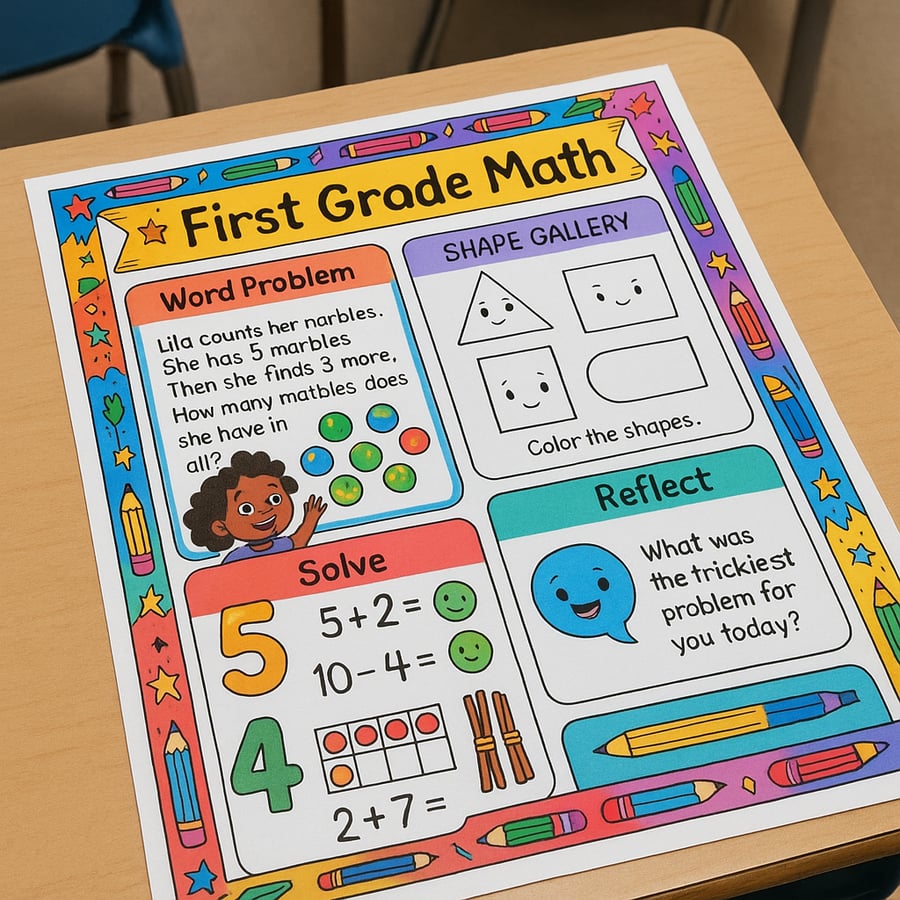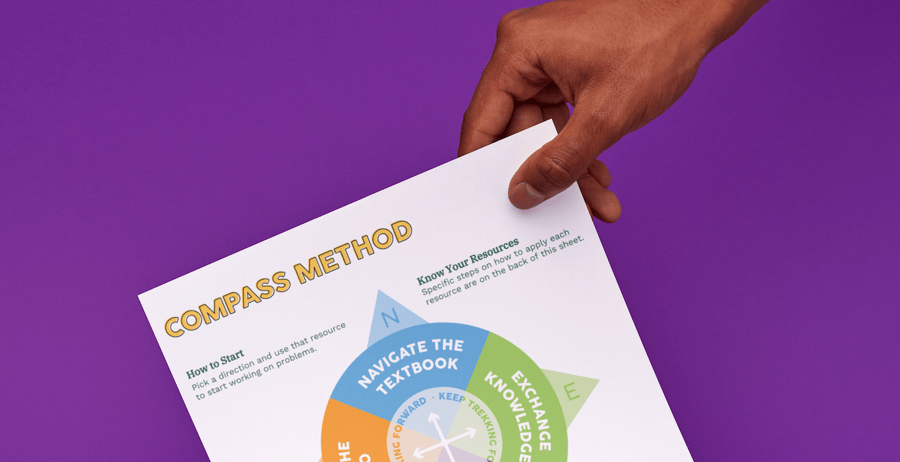How to Create a First Grade Math Worksheet That Builds Understanding
How to Create a First Grade Math Worksheet That Builds Understanding
Many teachers look for ready-made first-grade math worksheets, but the most effective tools can be the ones you create yourself—tailored to your students’ needs and anchored in your classroom’s story of learning.
If you are interested in participating in a fellowship through MathTrack Institute about these topics, you can learn more here:
First grade is a pivotal year in mathematics. Students are not just learning facts; they are meeting the characters and settings that will shape their mathematical journey for years to come. When we design a worksheet for first graders, we’re not just giving practice problems—we’re creating invitations to explore, test ideas, and see themselves as mathematicians.
Below, we’ll outline the typical types of problems connected to first-grade standards and show how to frame them in ways that build both skill and meaning.
1. Addition and Subtraction Within 20 — Introducing the Main Characters
Standards Connection: Add and subtract within 20, using strategies such as counting on, making ten, and decomposing numbers.
Worksheet Idea: Create short story problems where numbers are “characters” in a scene. Often, your curriculum will have some insights that you can slide into your created handout. Instead of a page of bare equations, offer a mix:
- Number sentences (e.g., 8 + 5 = __)
- Word problems (“Lila had 8 marbles. She found 5 more. How many marbles now?”)
- Visual representations with objects or ten-frames.
Storytelling Lens: We think of teachers as storytellers. Through this role, numbers are not just symbols—they have roles, personalities, and relationships. In these problems, addition is the act of bringing characters together, while subtraction is the challenge of separating them. The worksheet becomes a stage where students can see the plot unfold and discover that different strategies are simply different storylines to the same ending.
2. Understanding Place Value — Seeing the Setting
Standards Connection: Understand that the two digits of a two-digit number represent tens and ones. Compare two two-digit numbers.
Worksheet Idea: Use images of “bundled” and “loose” items (e.g., bundles of ten sticks and single sticks) and ask students to match, draw, or write the corresponding number. Include exercises comparing numbers with <, >, and = symbols.
Storytelling Lens: We think of teachers as storytellers. Through this role, place value is the “world” where numbers live. Tens are the neighborhoods, ones are the houses. A worksheet can help students navigate that world—walking from one street to another, learning that moving a “bundle” changes the entire landscape. This gives them an intuitive map they will use for years.
3. Measurement and Data — Giving the Story Dimension
Standards Connection: Measure lengths indirectly and by iterating length units; tell and write time; organize and interpret data.
Worksheet Idea:
- Draw objects to be “measured” using paper clips, blocks, or hand spans.
- Have students record the number of units long or tall an item is.
- Include a simple chart or table for students to fill in and answer “Which is longer?” or “How many more?” questions.
Storytelling Lens: We think of teachers as storytellers. Through this role, measurement introduces supporting characters—tools like rulers, clocks, and units—that help our main characters (numbers) interact with the real world. A worksheet built with these characters shows that math isn’t just on paper; it’s in the lengths of pencils, the times of recess, and the sorting of favorite snacks.
4. Geometry — Meeting Shapes as New Characters
Standards Connection: Distinguish between defining attributes (e.g., triangles have three sides) and non-defining attributes; compose two-dimensional or three-dimensional shapes.
Worksheet Idea: Provide a “shape gallery” where students:
- Identify shapes by attributes.
- Color shapes with certain properties.
- Combine simple shapes to make composite figures.
Storytelling Lens: We think of teachers as storytellers. Through this role, shapes are some of the most memorable characters in early math. Triangles, rectangles, and circles each have their own “personality.” Worksheets can invite students to explore how shapes combine, transform, and relate to each other—like characters working together to solve a problem.
5. Building Reflection Into the Worksheet
First-grade worksheets shouldn’t just end when the problem is solved. Adding a final section with prompts like:
- “What was the trickiest problem for you today?”
- “What did you notice about numbers/shapes/time?”
- “Could you explain one of today’s problems to a friend?”
Storytelling Lens: We think of teachers as storytellers. Through this role, shapes are some of the most memorable characters in early math. Triangles, rectangles, and circles each have their own “personality.” Worksheets can invite students to explore how shapes combine, transform, and relate to each other—like characters working together to solve a problem.
This mirrors the Reflect stage from the BEAR worksheet—encouraging students to see themselves as co-authors of their learning story.
Final Thoughts
A well-designed first-grade math worksheet does more than give practice—it connects students to the meaning behind the math. By designing problems that align with first-grade standards and framing them in story, you help students build not only skills but also a sense of belonging in the world of mathematics.
When the worksheet becomes a story, every number has a role, every problem has a setting, and every student is a coauthor of mathematics.
Subscribe to Our Newsletter

